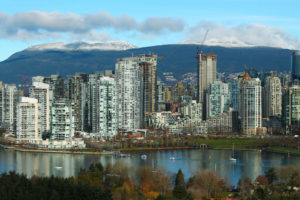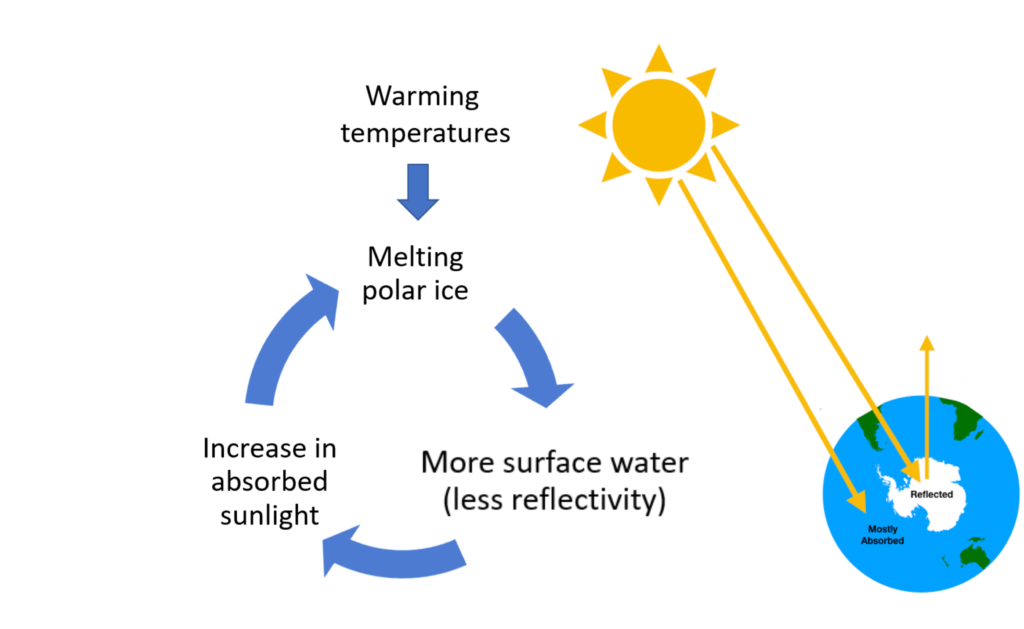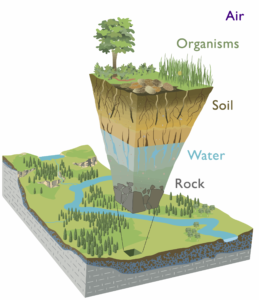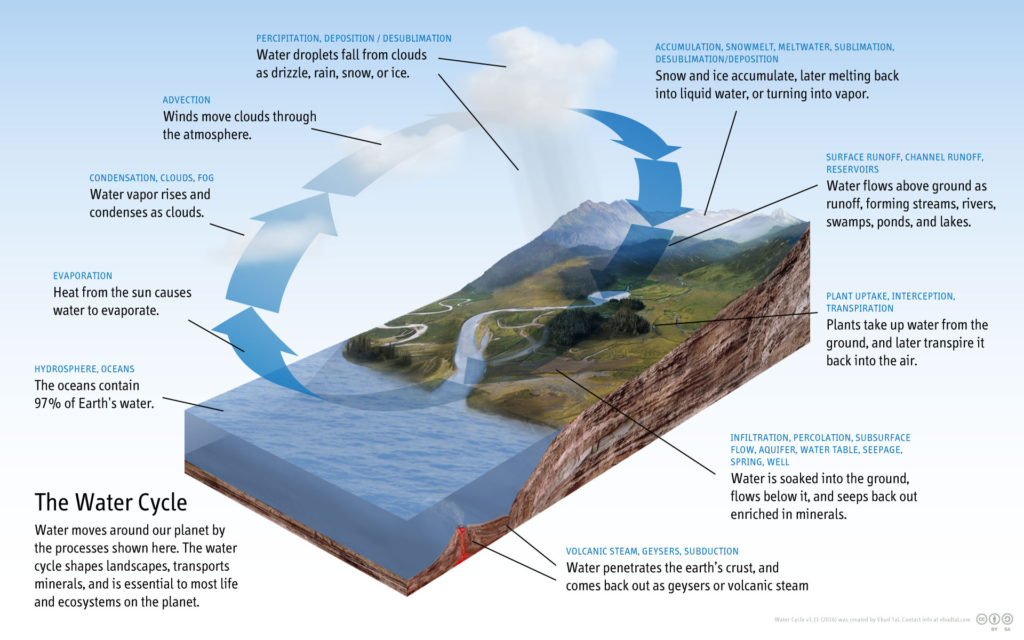Main Body
Chapter 1
Topic 1 – Welcome to Physical Geography
Learning Objectives
- Define physical geography as interdisciplinary, systems-based, and advanced by hypothesis testing
- Define the system’s approach (introduce the rock cycle, hydrologic cycle etc.)
Directly defined, the term Geography means: Earth Writing or Earth Description; however, the concept of geography involves much more than this. As a subject, geography explores the relationship of humans with the spaces they interact with in time. Understanding these relationships allows us to consider the ‘geography’ of a place.

|
The City of Vancouver |
The geography of Vancouver, for example, includes the fingerprints of human design: the transportation networks, the types of buildings and residences, the social spaces, all studied within the subdiscipline known as Human Geography. But it also includes how people in Vancouver are affected by the natural environment: the climate, the availability of water, the underlying geology, all topics covered in the subdiscipline known as Physical Geography. Recent developments in digital mapping and spatial analysis have led to the development of a third area of study known as Geographic Information Science.
So why have I never heard of anyone being employed as a Geographer?
The unique blend of Human and Physical Geography situates geography as a truly interdisciplinary subject. The interdisciplinary approach not only makes geographers experts at bridging the physical and social sciences, it also places them perfectly to address some of the most complex challenges facing society today. Progress on climate change, for example, requires approaches that understand the natural science behind the environmental changes that are occurring (physical geography) and the social, political, and economic impacts of those changes (human geography). This also means that geographers work in many different job environments, everywhere from collecting data in field environments to analyzing spatial data in lab environments to making policy decisions in political environments to making real estate and transportation decisions in the business environment.
One of the primary advantages that Physical Geography brings as a discipline is its systems-based approach. The systems approach defines everything at work in the world, matter and energy, as a combination of inter-related working parts. Individual systems can work independently or interact with other systems at multiple scales.
All systems are similar in several ways:
- System function is greater than the sum of the individual parts
- Systems are nested within and connected to other systems
- Systems are controlled by positive and negative feedbacks
It may be tempting to study a system by reducing it to its component parts and trying to understand these as well as possible, but if you studied the individual parts of a car without seeing them at work together, its unlikely you would ever imagine the results when they are properly assembled and at work. Furthermore, sometimes the function of a system component is impossible to determine when analyzed from outside of the system. Imagine trying to discern the function of a windshield wiper without having the benefit of seeing it attached and in place on a working car.
We visualize system function by trying to model all of the connections, flows and roles between system components. This is the basis for cycles like the water cycle which you have likely seen before:
The interconnectedness of systems means that when one part of the system changes, it can have significant impacts as it feeds back into the rest of the system. Changes in a system are categorized as positive, negative or neutral feedbacks. A positive feedback reinforces the original function of the system, a negative feedback reduces the original function of the system, a neutral feedback causes no change.

One example of a positive feedback in a system is associated with changes in Arctic sea ice coverage and global glacier coverage. Ice is much more efficient at reflecting incoming energy from the Sun than either liquid water or bare ground. As global average temperatures increase, the presence of ice in the polar regions is diminishing. Less ice, means less reflection and more absorption of solar energy, feeding back and reinforcing the warming of the system.
Generally, we break down the systems present on Earth into four main spheres (keep in mind there are interactions and connections between each of these spheres):
|
A snapshot of the critical zone and some of the interacting units that define it. |
- Biosphere Incorporates all life on Earth. Humans are part of this sphere.
- Hydrosphere The system of water across the Earth, in all three phases: solid, liquid and gas.
- Atmosphere The system of gases held against the Earth’s surface by gravitational force.
- Lithosphere The solid surface of the Earth and heated layers of Earth’s internal structure.
These four spheres combine most significantly in a space geoscientists have termed the Critical Zone, where rock, soil, water, air and living organisms interact and shape the Earth’s surface. Most environmental research is carried out within the Critical Zone. See more about the four spheres here:
https://www.youtube.com/watch?v=VMxjzWHbyFM
https://www.youtube.com/watch?v=UXh_7wbnS3A
Glossary:

